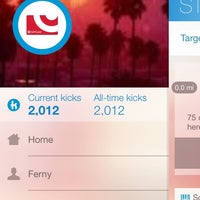

The scattered photon ideally deposits its energy in the detector in a series of one or more interactions and is finally absorbed via a photoelectric interaction. Considering a photon with energy incident on the detector's sensitive area that undergoes a Compton scattering, it will create a recoil electron of energy, quickly absorbed and measured by the detector, and a scattered photon of energy. Figure 1 illustrates the schematic of the Compton reconstruction principle. The COCAE instrument's CdTe detectors work both as a scatter, thanks to their arrangement into thin layers, and as an absorber, due to the large atomic numbers of Cd (S equal to 48) and Te (S equal to 52), resulting into a high photo-absorption efficiency. A typical design of such an instrument consists of two types of detectors, the scatter detector with relatively low atomic number, where the Compton scattering occurs, and the absorber with relatively high atomic number, in which the scattered photon is ideally totally absorbed. The main ideas which led the research effort were: Compton imaging Instruments like COCAE that exploit the Compton imaging technique deduce the energy of the incident gamma ray photons as well as their origin within a cone, by measuring the energy depositions and the positions of the Compton scattering interactions recorded in the detector. Project context and objectives: The goal of COCAE was to develop core technologies which will enable the realisation of multifunctional radiation detection units capable to locate and identify radiation sources from emitted X and gamma rays in a broad spectrum of energies (up to 1.5 MeV). Compton camera system for identification and mapping of radioisotopes in various security environments such as: - border security and inspections - security and inspections at recycling factories - nuclear waste management facilities and decommissioning of nuclear reactors - emergency response. for the utilisation of the crystals and associated electronics in commercialising a Cd(Zn)Te. implementation of a European based commercial activity for the supply of direct conversion Cd(Zn)Te crystals for x/gamma ray imaging applications with customers in Europe and worldwide and 2. COCAE opens a pan European opportunity for: 1. The design at all stages has been supported by a vast simulation effort at system level and by reconstruction algorithm development, both led by the application requirements. Within the three and a half years of the project this target has been achieved partially, because the construction of the instrument has not been completed yet.


The hybridisation of the detectors and of the electronics and the design and construction of an instrument with purpose to explore the capabilities of the proposed method of radioactive source localisation and identification. A series of CMOS integrated circuits named Photon four-dimensional information (P4DI) were developed with last outcome the P4DI_v2F with 1250 pixels.

The development of pixel electronics capable to record for each converted photon within the detecting layer its spatial coordinates, the time of conversion and the photon energy. The fabrication of pixel detectors having structure of planar p-n and Schottky diode detectors with record energy resolution and Ohmic pixel detectors with wafer scale pixelisation. The growth of high purity, detector grade Cd(Zn)Te crystals resulting in the development of the first 3 inch high quality ingots in Europe. The R&D within the collaboration was focused on the following core technologies: 1. Examples where the speedy and accurate acquisition of such information is valuable, apart from the case of a hypothetical terrorist attack, are the melting of a strong radioactive source in a furnace of a scrap metal recycling factory or the theft and the subsequent relinquishment of a source or the dispersion of a radioactive substance due to malfunction of a nuclear power plant. COCAE utilises the Compton effect a solution inspired by high energy astrophysics. The accurate answer to these questions is either time consuming and expensive or error-prone, until now.
#RECYCLING ELECTRONICS TARGET COMPTON PORTABLE#
COCAE develops core technologies for nuclear radiation detection and its target outcome is a portable instrument able to answer where (within a range of some meters) and of what kind a radioactive source is.


 0 kommentar(er)
0 kommentar(er)
